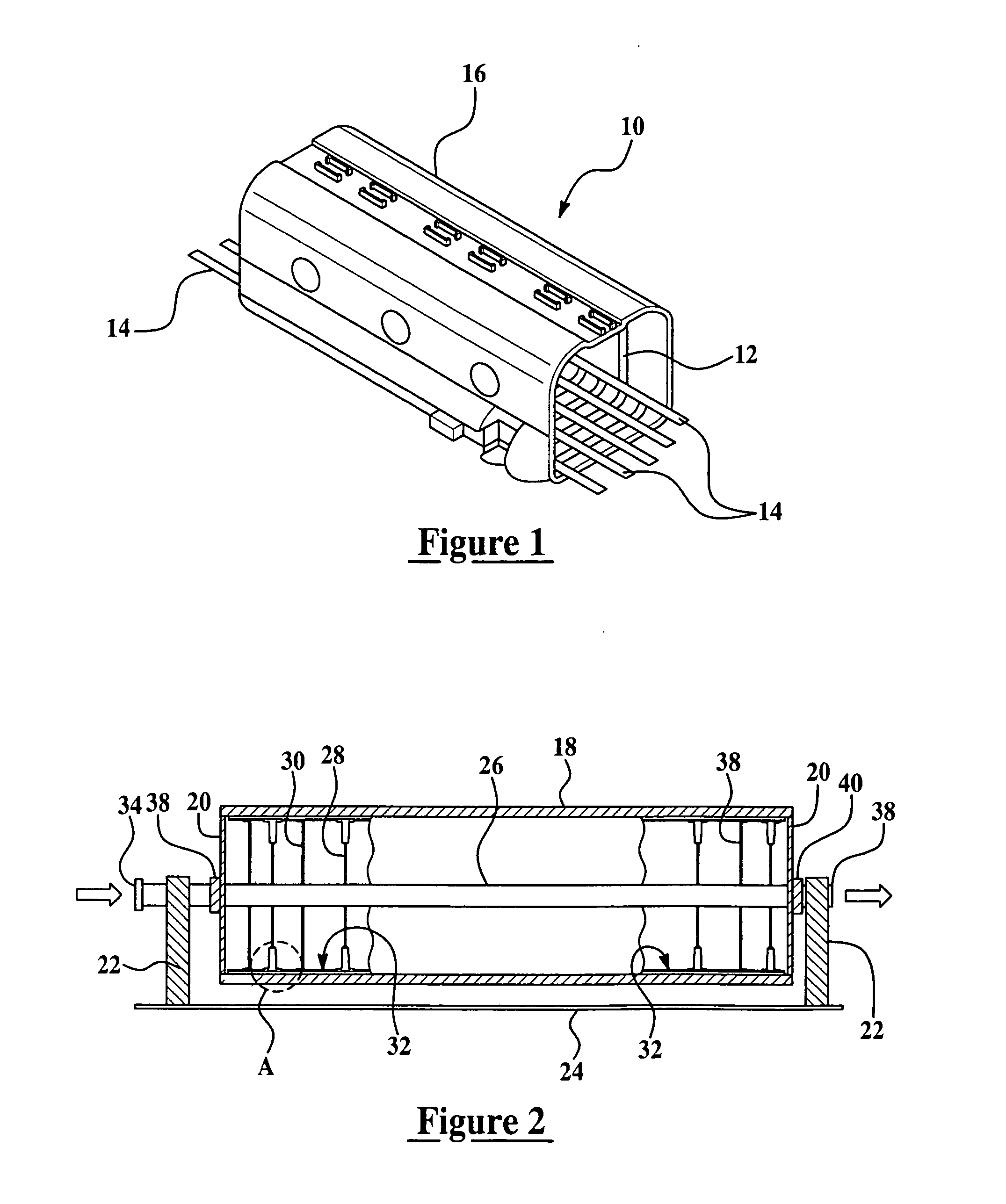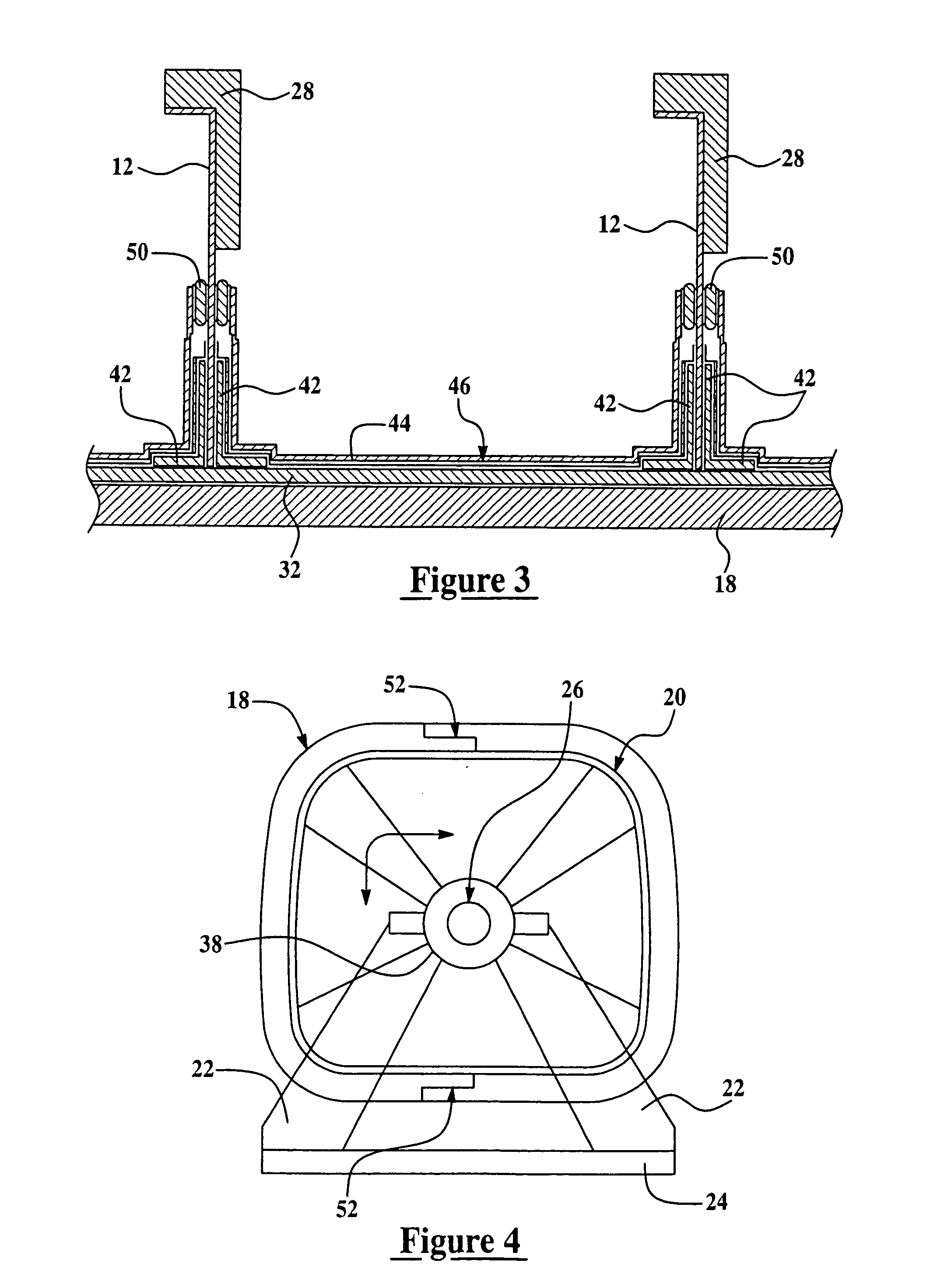Rotational vacuum assisted resin transfer molding
a vacuum assisted and resin transfer technology, applied in the direction of transportation and packaging, manufacturing tools, other domestic objects, etc., can solve the problems of unnecessarily heavy structure, unsatisfactory thickness gradient in the finished structure, and reduce the integrity of the molded structure, so as to reduce the gravity-induced settling of the resin
- Summary
- Abstract
- Description
- Claims
- Application Information
AI Technical Summary
Benefits of technology
Problems solved by technology
Method used
Image
Examples
Embodiment Construction
[0013]Referring first to FIG. 1, a section of an aircraft fuselage generally indicated by the numeral 10 is essentially square in cross section and has walls formed from a laminated composite material well known in the art of aircraft construction. The fuselage 10 has an outer skin 16 which is co-bonded with a series of longitudinally spaced, transversely extending frame members 12, and a series of laterally spaced, longitudinally extending stringers 14. The frame members 12, stringers 14 and skin 16 are preferably formed using VARTM, in which these components are co-cured and co-bonded to form a highly rigid, rugged, unitized structure. In accordance with the present invention, the wall thickness of the skin 16 is substantially uniformed throughout the height of the fuselage 10, thus providing a structure which possesses high structural integrity with minimum weight.
[0014]The fuselage 10, or similar large composite structure, is manufactured using the apparatus shown in FIGS. 2-4. ...
PUM
| Property | Measurement | Unit |
|---|---|---|
| pressure | aaaaa | aaaaa |
| radial distance | aaaaa | aaaaa |
| gravitational force | aaaaa | aaaaa |
Abstract
Description
Claims
Application Information
 Login to View More
Login to View More - R&D
- Intellectual Property
- Life Sciences
- Materials
- Tech Scout
- Unparalleled Data Quality
- Higher Quality Content
- 60% Fewer Hallucinations
Browse by: Latest US Patents, China's latest patents, Technical Efficacy Thesaurus, Application Domain, Technology Topic, Popular Technical Reports.
© 2025 PatSnap. All rights reserved.Legal|Privacy policy|Modern Slavery Act Transparency Statement|Sitemap|About US| Contact US: help@patsnap.com



